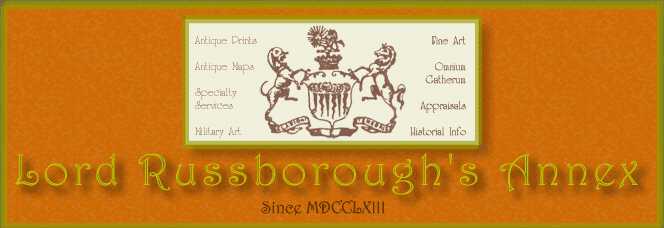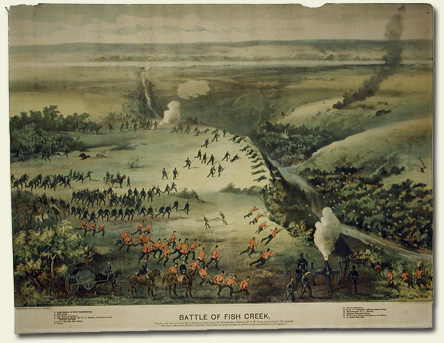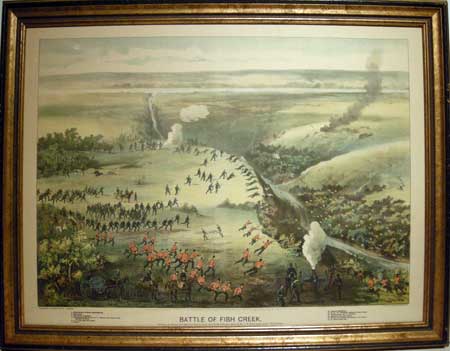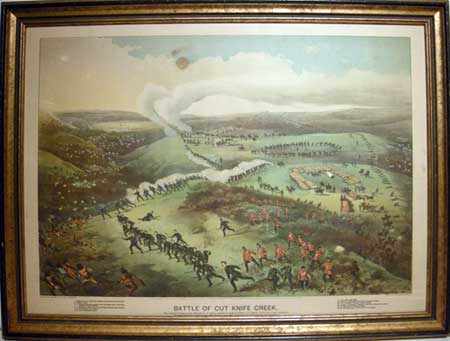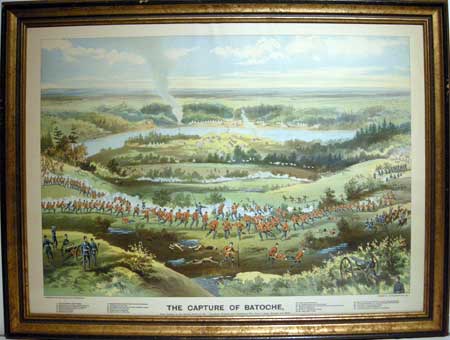"The skirmish that set a nation alight:"

THE FIGHT AT DUCK LAKE
William Daniel Blatchly for the Canadian Pictorial & Illustrated
War News
This is a scarce contemporary, hand coloured image, of the skirmish
that set alight a nation.
Located some 45 miles south-west of Prince Albert, Saskatchewan,
Duck Lake was in reality a small trading post known officially
as Stobert, consisting on March 26,1885, of eight or nine white
washed log buildings. The area had been settled by Métis since
the disappearance of the buffalo, but now real hardship and land
injustice was inflicted upon the Métis, exacerbated the particularly
harsh winter of 1885.
During the civil unrest which came to be known as the North-West
or Riel Rebellion, Gabriel Dumont ambushed 53 Police officers and
41 Prince Albert volunteers, whilst Louis Riel inspired the Métis,
crucifix in hand, with religious fervor in an attempt to establish
a Provincial Government.
Depicted are the police sleighs barricading the road and the tricky
situation in which Lt. (later Major) L. N. F. Crozier, the superintendent
of the NWMP. at Battleford, found himself in. Despite appearances,
for here it looks as if Crozier's men have the upper hand, a contemporary
report stated that a fight occurred forcing Crozier to retreat
with twelve of his men killed.
Although only about 1000 rebels actually took up arms, the potential
threat was of some 20,000 on the warpath. The federal government
mobilized 7982 troops, 500 NWMP., 9 field cannon and 2 Gattling
guns; and in a remarkable feat of logistics transported the force
within 4-9 days across the breadth of the country, along the fledgling
Canadian Pacific railway, in a successful, if controversial, effort
to suppress the uprising.
Handcoloured, framed Published by Grip P. P. Co. Toronto, 4 July
1885.
Stone Lithograph. Click for more information on the printing technique.
9 X 12" excluding letters (22.7 X 30.5 cm.)

